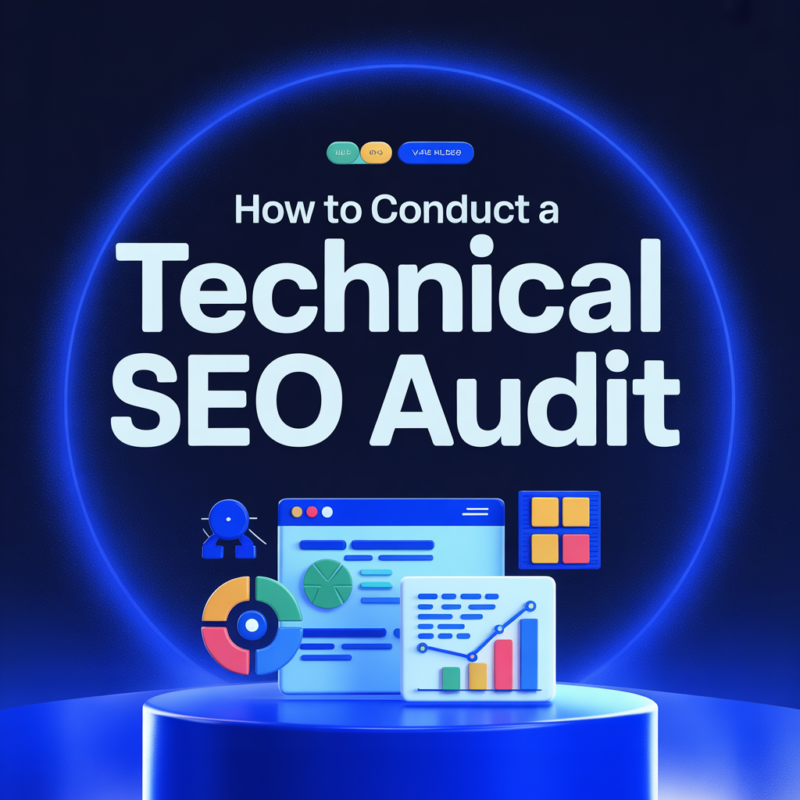The Benefits Of Long-Tail Keywords In SEO
When I began to learn about Search Engine Optimization I clearly remember that situation. The concept of keywords was being discussed constantly yet people failed to differentiate between short-tail and long-tail keywords. During that period I focused mainly on broad search terms which included “best shoes” alongside “cheap phones.” No amount of my work managed to prevent my content from disappearing among other texts. A guide on The Benefits Of Long-Tail Keywords In SEO.
Long-tail keywords were discovered by chance when I searched further. The keywords I used were extended unique phrases which included “best running shoes for flat feet” among others and “affordable smartphones with good battery life.” Initially I did not believe these keywords held any significant power. Fewer searches for a keyword should not be seen as advantageous. The real change became apparent when I started applying them. My content ranked higher. The content I published cleared the competition to enable visitors to discover it while they spent more time on my website engaging with my content.
Hundreds of keywords between three to six words transformed my Search Engine Optimization approach. The strategy attracted the perfect viewers who specifically sought out what I needed to sell. This post explains why particular keywords really matter when used to enhance your website traffic levels.
What Are Long-Tail Keywords and Why Do They Matter?
Up until recently I believed search engine ranking dependent on picking the most searched words. The reasoning behind this approach seemed straightforward because more search queries for a particular word would result in increased visibility of my content. Competing for those short commonplace words turned out to be virtually unattainable. Large corporations along with established website operators controlled the search results. All my hard work failed to get my content above numerous other results in search engine pages.
Then, I discovered long-tail keywords. People choose these longer specified search phrases to find specific outcomes. Users who browse the internet seek specific terms such as “best running shoes for knee pain” and “comfortable sneakers for standing all day” when they need such information. My content transformed upon adding these detailed search phrases into my writing. My pages started ranking higher. Visitors stayed longer. The number of visitors to my site increased due to the direct solution I provided them for their needs.
The correct audience comes to websites through employing long-tail keywords. Their audience consists of individuals who have made the decision to purchase instead of wasting time on indifferent visitors. The strategy has worked successfully for my own blog. General wording of my content attracted multiple empty clicks from users who shortly departed from my pages. My approach of using targeted long-specific keywords transformed my traffic quality for the better. The readers remained on the website and ventured into my offers through their active participation.
It’s not just about traffic. Your targeting matters since it allows you to find genuine users interested in your products. The earlier discovery of this knowledge would have prevented me from wasting numerous months on fruitless efforts.
How Long-Tail Keywords Differ from Short-Tail Keywords
I focused only on brief keywords when I began studying key phrases. They looked simple and powerful. The three keywords “fitness tips” “best laptops” “cheap hotels” appeared like ideal choices to reach thousands of readers. To me the quantity of users searching for a keyword meant it would boost my opportunity to gain traffic. But I was wrong.
After a brief period I came to understand that short-tail keywords face intense competition in search results. Multiple types of content producers including major corporations along with minor bloggers try to achieve top placements for these keywords. The years of established authority among big websites left my content stranded without any chance of success. Although I sometimes managed to secure some clicks through search traffic most of these visitors proved to be the wrong demographic. The visitors who accessed my site were searching for distinct solutions which my product did not provide them so they departed shortly.
Long-tail keywords are different. Both terms are longer keyword phrases because they specify into subjects like “best laptops for college students on a budget” while “easy fitness tips for busy moms.” The usage of these keywords brought me an unexpected yet extraordinary result. The field of competition no longer included massive websites. Rainy days brought me positive returns as my content began appearing in relevant search results. Users who visited my content showed genuine curiosity because of my chosen keywords. Readers remained on the page until the end of the content and took internal site actions.
Our intent towards keywords represents their main variation between short and long variations. Short keywords bring random visitors. People who have already established what they seek will use long-tail keywords to find information. I’ve seen it firsthand. The wide range of keywords led me to become one of hundreds of search results. The moment I made my content more specific to one target audience it successfully brought customers who were actively looking for it.
Why Long-Tail Keywords Are a Game-Changer for SEO
At the beginning of my SEO work I pursued well-known popular keywords. I assumed that attaining positions for search terms like “best shoes” or “online business” would result in massive traffic to my website. I was wrong. My content disappeared within an extensive field of competing web pages. My website refused to have any success in reaching beyond the initial search page rankings no matter which techniques I implemented.
At that point I ran across long-tail keywords. I switched from targeting wide general keywords to focused expressions of “best running shoes for flat feet” and “how to start an online business with no money.” Everything changed. My content pages started appearing at higher positions in search results and users who visited my pages maintained their presence. They weren’t just casual browsers. I provided precisely the specialized information that searchers needed in their specific inquiry.
My SEO performance became effortless because of targeting long-tail keywords. After dropping competition with large corporations from my search focus my approach became more effective. The content I produced successfully reached users actively searching for solutions. The best part? The target audience that these visitors represented showed higher levels of commitment that included subscriptions and purchases.
Much success would have resulted if I discovered these insights previously. Focusing on effective keywords from the beginning would have been better than trying to compete for unattainable search terms. Long-tail keywords aren’t just helpful. They are a complete game-changer.
The Role of Long-Tail Keywords in Driving Targeted Traffic
During my previous website phase I searched for the reason behind my website failing to attract suitable visitors. The visitors entering my site were not staying to explore the content. Each visitor conducted a quick preview before moving away from my content. No comments, no shares, no real engagement. The audience receiving my messages seemed completely wrong to me.
robatting long-tail keywords helped me move into the right direction as to improve my website’s visibility. I chose to optimize my site for precise phrases that precisely aligned with what users entered into search engines. That’s when everything changed. Real website visitors started to appear after my website successfully performed in attracting people who needed the information I offered. The visitors reached my page because they made a conscious choice to stop there. The audience needed information and I possessed the answers which I successfully shared.
I noticed a huge difference. Searchers conducting long-tail queries stayed on my website longer than other visitor segments. The targeted audience remained on multiple web pages besides subscribing to my newsletter and purchasing recommended items. The discovery of this approach revealed the actual method for obtaining purposeful website visitors.
Users can find targeted products through the specific manner of long-tail keywords. These search phrases attract individuals who act with commitment because they were already seeking information and solutions. I started stopping the fight for general audience visibility in crowded spaces because my strategy now attracted the specific audience I had set out to reach. Traffic was not the sole focus as I began working towards my goals. What mattered was the quality of visitors who arrived at my site.

How Long-Tail Keywords Improve Search Engine Rankings
My experience with search engine ranking struggled me to the point of frustration. Hours of content writing did not help my pages escape being lost in multiple pages of search result listings. No matter what effort I put into it I lacked the capability to match up with major websites which already existed for many years. It felt impossible.
Then, I made a simple shift. I moved away from chasing short competitive keywords which followed an approach toward using longer tailored search terms. My content focused on explaining which affordable smartphones provided extended battery life instead of targeting the competitive “best smartphone” search term. The difference was immediate. Search results displayed my content at the front position on the first search results page. The search engines seemed to become aware of my website at that moment.
The use of specific keywords enabled my content to distinguish itself. Less competition among websites for those particular expressions allowed my content higher chances of achieving premium ranking positions. My content became more noticeable which led to increased website visitors who spent more time interacting with the site. This behavior attracted search engines to rank my website better. Search engines took notice. My website rankings improved as more users visited my articles while remaining on my pages.
The search engines focus on content relevance when evaluating web pages. The assessment of search engines extends beyond keywords because they judge content and its relevance to search queries. My article became more pertinent to its target readership through the adoption of long-tail search terms. I stopped struggling for placement in prevailing markets because ranking among important fields became my new goal.
Boosting Conversion Rates: Why Long-Tail Keywords Attract Buyers
The growth in my website traffic used to generate feelings of excitement inside me. I began to observe abnormal behavior in my website. The visitors skipped buying since they only explored the website without purchasing anything. The visitors spent just a few seconds on the page before exiting. The visitors who visited my site seemed to never gravitate toward the right products I offered.
I learned the strong potential of using long-tail keywords during this time. My approach shifted to using specific headphone specifications such as “best noise-canceling headphones for travel.” The results changed completely from evening to daytime. Customers who reached my website did so with purchase intentions. These visitors demonstrated purchase readiness because they knew precisely what they needed together with a purchase intent.
My stores conversion rate increased substantially right after implementing this approach. My website saw an influx of customers rather than unrelated visitors. Users spent extended intervals on my site while they engaged with links which led to transaction completion. The measuring factor changed from simply gaining traffic to attracting target customers who were ready to buy. My main objective now involved acquiring targeted website visitors who would shift into customers.
The use of long-tail keywords brought visitors to my site that demonstrated higher commitment toward buying decisions. The visitors were already well-informed because they completed their research before coming to the site. They knew what they wanted. My content provided the needed direction to convert undecided customers into acquiring users. Through this method I converted my website visitors into sales customers.
How to Find the Best Long-Tail Keywords for Your Content
My attempt at finding suitable keywords for content never worked out well. I chose keywords without knowing since I wanted to discover words that could lead me to success. My choices of keywords were inaccurate during most of my attempts. Waste seemed like the perfect description for my work because my articles never appeared on search results pages.
I began studying the specific search engine input that people used. Verbalizing my questions became possible through my use of search suggestions along with autocomplete and forums to see how actual people worded their inquiries. I noticed a pattern. Searches done with maximum detail stood as the least competitive queries. At this moment I had confidence that I was developing something valuable.
My research with keyword research tools began at this point. The search engine offered me general topics where I selected longer phrases that appeared in the results. When I found search queries that resemblance genuine user inquiries I recognized them as effective phrases. The word selection included phrases which demonstrated obvious purpose. The list of best running shoes for flat feet showed strong purchaser intent since the user actively sought out such specific footwear info. The users needed a specific answer to their query. This specific keyword transforms into genuine audience participation.
The inspection of competitor keyword rankings served as one of my successful strategies. The search for unconventional keywords led me to integrate them inside my written content. This strategy allowed me to bypass competition with big websites in the online space. My keywords matched those of other businesses while I won ranking positions for their missed terms.
The approach led to tangible benefits after I began implementing it. I achieved my goal when my articles began connecting with target readers and viewers made extended visits to my website. I achieved what seemed like the solution I had been looking for.
Effective Strategies to Optimize Your Website with Long-Tail Keywords
My first attempt using long-tail keywords involved a wrong approach. I inserted keywords into my content with no particular strategy because I expected search engines to detect them anyway. It didn’t work. My writing displayed artificiality along with my site maintaining its original position. I understood that I needed to discover another method.
I learned that placement mattered. The natural insertion of my selected keywords into titles and headings together with initial sentences improved performance more than repeating keywords randomly did. This made a huge difference. Search engines recognized the content focus of my page as they did not make my readers feel like they read robot-generated text.
I produced in-depth blog contents for each chosen keyword. The content of my article specifically addressed “best laptop for video editing under $1,000” whenever users performed this particular search query. My content featured objective statements alongside my actual suggestions as well as practical examples for support. Through this approach I earned visitor trust while they spent more time on my website.
The optimization of my URLs together with image descriptions proved to be helpful. Each web page link contained necessary keywords while all image alternative text displayed relevant terminology. During this period I made a simple update which led to improved search engine rankings throughout the months.
My website benefited the most from direct question answers as a key operational change. I prepared my content to deliver straightforward solutions to users who sought particular issues. The quality of information I provided resulted in improved website value which attracted more visitors and better engagement.
My website attracted increased traffic combined with better search engine positions after I implemented this transformation. My site achieved more than another regular search result page. People found my site useful because it served as their designated source for this particular information.

Common Mistakes to Avoid When Using Long-Tail Keywords
In my early experience using long-tail keywords I believed I understood everything. My content contained as many keywords as I could add because I thought it would raise my search engine ranking results. It didn’t. The writing felt strange and several visitors abandoned my articles quickly. These search platforms uncovered my maneuver and refused to improve my search position. My experience taught me that keyword-forcing ruins the readability of articles.
I failed by selecting keywords without verifying the number of related searches available. The searched volume for these lengthy phrases proved elusive and therefore impossible to track down. Extensive writing of content material for topics which proved useless to potential readers occupied many of my hours. I now verify whether searchers actually type a selected keyword before putting it into practice.
The onset stage was a time when I did not focus on user intentions. My initial keyword selection revolved around their length regardless of true user wants. Even though some phrases primarily focused on research rather than purchasing I approached them with an identical strategy. Better engagement along with more conversions occurred after I began implementing content matching according to user intents.
During a particular period I posted content with only one selected keyword. At first I believed that obtaining a position for one selected search term would suffice. Appearing with multiple related long-tail keywords across my content content served to draw more readers to my sites. Making my content feel more natural was one of the advantages of this approach.
The main error I made during my time on the platform was failing to monitor my article performance. My analytics showed that I never checked if my chosen keywords brought results although I believed they were effective. I performed my first review of posts after a long period and discovered Americajerk-Current auction listings in USA as the best performer compared to others. My evaluation of successful elements allowed me to refine my tactics and advance my website ranking positions.
Now, I focus on balance. I search which words to use then integrate them organically between phrases and ensure my content matches audience search queries. My website traffic growth owes itself to my ability to steer clear of these specific mistakes.
Real-Life Case Studies: The Power of Long-Tail Keywords in Action
I collaborated with a friend who maintained a small internet-based business offering homemade candle products. The first search terms she implemented for business were generic “scented candles.” The market competition was intense along with minimal website visits to her domain. The lack of client website traffic made her doubt that SEO would ever deliver positive results. Long-tail keywords became a recommendation I made to her. She began using marketing terms which included “handmade lavender soy candles for relaxation.” A substantial boost in online website traffic became evident to her site within a few weeks. The exact product offerings of her store attracted prospective customers who increased her sales numbers.
The case that clearly impressed me occurs with my personal blog. At the start I selected competitive yet short search terms to optimize my business. The bulkier online websites overpowered my content through better search engine rankings. I made a decision to explore long-tail phrases for my strategy. The article featured the keywords “how to rank a new blog fast with long-tail keywords” instead of the general term “SEO tips.” I noticed a difference. The higher search engine rankings of my articles attracted interested readers from the targeted audience.
My friend who manages a neighborhood bakery business faced identical problems. She attempted to dominate the “best cakes” search position until she became buried by major nationwide competitors. I advised her to research the specific queries which drove customers to her business. The bakery owner shifted her emphasis toward constructing personal birthday cakes inside Brooklyn combined with economic wedding cake solutions for the local area. The local customer base started placing orders with her because she provided the product they required.
Through actual industry encounters I learned about the significant impact that focused keywords bring to business success. Small businesses alongside bloggers succeed in advertising competition by using long-tail keywords although they do not need to spend large amounts on ads. Long-tail keywords guide customers who actively search for what businesses provide into their customer bases.
Future Trends: Why Long-Tail Keywords Will Dominate SEO
My observation shows that people’s search behaviors undergo continuous transformation. Users tend to enter complete questions instead of previous short-word searches. Internet users search for “best running shoes for flat feet” instead of seeking only “best shoes.” The transformation of search practices makes long-tail search phrases grow consistently in importance.
Voice search functions as a key factor that drives the increased importance of long-tail keywords. I depend regularly on voice assistants yet I never give them only one or two commands at a time. My research queries use complete statements to seek out the best pizza restaurants in my area. A gradual increase in users adopts this practice. The websites which implement long-tail search terms obtain visibility within these search results.
Artificial intelligence brings new adjustments which affect SEO operations. Search engines are getting smarter. Search engines make efforts to decode the genuine meanings behind user queries. Websites enabled to give particular answers using extensive keywords will receive better search engine rankings.
The trend now shows businesses shifting away from using short business terms which are also competitive. Smaller businesses including myself along with bloggers frequently struggle to compete against major brands in the market. Through long-tail keywords our business achieves better visibility. By choosing particular expressions for my target I draw in prospects who need what I provide.
The value of detailed keywords known as long-tail keywords will steadily increase moving forward. Natural detailed searches will gain more preference from search engines as they advance their voice assistance technology along with AI capabilities. SEOs that wish to lead their market need to begin adopting this emerging trend immediately. I know I am.
The Rise of Voice Search and Its Impact on Long-Tail Keywords
I first encountered voice search during a kitchen session while my hands were full with flour. While my hands remained coated with flour I attempted to find a quick pancake recipe from inside the kitchen. I decided to communicate my question through voice function without using my handheld device by asking “Hey, what’s the easiest pancake recipe?” The search data appeared as clear instructions in just a few seconds. My experience of using voice search in that moment helped me see the extent to which search by voice transforms information retrieval.
People search the internet using spoken words increasingly. During typing I maintain brief expressions that read “best running shoes.” My verbal inquiries to seek information take the form of full questions as demonstrated by “What are the best running shoes for flat feet?” Long-tail keywords demonstrate their power because of the way they match natural human speech patterns. Human language patterns reflect the structure of these search terms.
Search engines are getting smarter. The purpose of search engines is to grasp what users need precisely. The platform displays results based on the core meaning behind entered keywords rather than matching them precisely. Alternative keywords have become vital due to this recent change in search engine practices. To succeed in voice search I must consider longer verbal expressions beyond brief words. To reach potential readers successfully I should craft full authentic phrases which match the way real people speak.
I have applied this knowledge on my own content materials. The insertion of additional conversational language into my content made my website traffic push upward. In my SEO content I changed previous statements about SEO tips to new phrases that read “How do I enhance my website’s SEO performance?” The modifications I made to my content led to increased appearances in voice search results. The addition of more conversational phrases transformed my website by attracting visitors who spent additional time since they discovered precisely what they needed.
Voice search is only growing. Human beings prefer quick solutions that speaking offers over typing speed. Long-tail keywords will gain higher value in the future because of this trend. To maintain my position I need to think about the ways people talk rather than the ways they type. The essential element for maintaining market superiority lies within this approach.
How AI and Machine Learning Are Shaping Search Behavior
Search engines in my memory were uncomplicated tools before. Each search request led to unpredictable outcome because I only entered two words at a time. I often checked multiple pages to discover the content I required. Things are different now. The search engine demonstrates perfect understanding of my needs even if I present my request in an imperfect manner. The continuous learning activities of AI and machine learning systems originate from human search behaviors.
I needed to buy a video editing laptop during that particular day. My search included more than the basic term of “best laptop.” I needed to find the best budget laptop for editing 4K videos thus I submitted my question to a search engine. The results were surprisingly accurate. My search engine displayed results which seemed to come directly from understanding my thoughts. That’s because AI studies patterns. Machine Learning mechanisms have stored my previous search actions along with effective result selections and all the questions I have previously asked.
The modern search engine operation exceeds basic keyword matching capabilities. They try to understand intent. Search engines understand people seeking instructions on “how to fix a leaking faucet” do not require advertisements for repair tools. The patterns which AI detects proved beneficial to me. My content strategy dedicates itself to real question solutions rather than standard industry terminology practices. Enhanced engagement levels demonstrate a substantial gap between the two methods. The combination of longer page stay durations and improved rankings has turned into a winning pattern for my site.
Information technology influences search results to show results tailored to each individual user. The search results page shows me different coffee shops compared to those who search from a different location. Machine learning knows my habits. The search engine recognizes my preference for establishments in my neighborhood that gain positive reviews from users. Organizations and content developers must develop more intelligent approaches due to this trend. Nowadays generic search terms are inadequate. Users demand search engines to provide them with the most suitable results.

Why User Intent Matters More Than Ever in SEO
My previous understanding of search engine ranking consisted of adding every suitable word into a text for maximum visibility. My writing included multiple keywords because I sought increased website traffic through such techniques. Sadly enough my approach started working at first until I identified uncommon behavior. Each visitor who came to my page chose to exit my website within a short period. These users failed to discover solutions on their queries. At that moment I understood my focus on search engine positions rather than understanding user needs.
User intent is everything now. Users who search for “best budget cameras for beginners” do not seek information about camera brands but require recommendations and user feedback. Searchers expect to find specific recommendations together with comparative information as well as genuine user feedback from the site. According to the expectations of users my content fails to deliver they move toward alternative sites which provide superior information. Search engines notice this. User satisfaction takes a downturn when visitors depart too fast from websites. My experience shows me that this problem has affected pages which I manage.
I refreshed an outdated piece which covered side jobs accessible through the internet. The text contained many keywords yet failed to provide distinct solutions to the readers’ questions. I transformed the article into informative content which explained every side hustle method including earning potential and required experience requirements. There was an enormous distinction between the previous version and the rewritten one. More visitors adopted a longer session on the page while clicking its content links then deciding to share it. My search engine rankings increased automatically as I stopped worrying about keyword concentration.
Search engines are smarter now. Their experience lets them recognize between individuals interested in buying, individuals seeking education and people pursuing quick solutions. Any content that fails to relate to true user needs becomes useless. Beyond counting traffic I have redirected my efforts because user needs now become my main priority. Placing my attention on resolving actual problems has gained prominence over all other tasks. It’s a game-changer.
The Shift from Generic Searches to Conversational Queries
Internet search methods have experienced considerable modifications that I have observed. People used to perform their online searches through brief direct requests. Internet users would execute a query that included “best running shoes” to check the results. Now, it’s different. Internet users now type out complete question queries that they would ask to a personal friend. People seek recommendations for running sneakers suited for individuals with knee problems or for marathon-distance runners through their online queries.
The modification in my personal search steps matched what I noticed in others. I conducted searches for “SEO tips” approximately several years back. A vast amount of general data would appear as a result. The question in my mind today is how to boost my SEO rankings when I have no budget available. The information I need includes particular solutions rather than a broad collection of ideas.
The alteration compelled me to develop new methods of producing content. My content develops around authentic question responses instead of inserting commonly used keywords throughout. I create in my thoughts the possible question someone would ask while next to me. My approach to writing in this fashion produced visible results. The content I posted started to receive audience interest which brought actual readers who spent time engaging with my website content.
Voice search technology has made this tendency even more visible to content creators. Users redirect their questions regarding nearby coffee shops to their smartphones instead of manually typing “coffee shop.” The natural flow of my content creates better performance outcomes. The habit of writing only for search engines no longer exists. My writing approach now presents content in spoken human language.
How Small Businesses Can Compete Using Long-Tail Keywords
It proves very challenging for small businesses to rise above the competition online. Optimal positioning through search results exists only for major corporations because they control what appears in front of users. I personally experienced trying to gain attention alongside pages of prominent established brands. I recognized the impressive benefits of using long-tail keywords at that very moment.
The research shifted to more specific search inquiries that prospective customers actually conducted. My close friend operates a small bakery business. The initial keyword she selected which sought “best cupcakes” turned out to be too heavily contested. Users searching online would not stumble upon this website. She updated her search terms to express both “best gluten-free cupcakes in Chicago” and where people could locate vegan cupcakes in their area. Suddenly, her traffic increased. The website visitors who discovered this platform had clear buying intentions. They were ready to buy.
I implemented the identical approach to my published content. I abandoned my attempts at ranking for general SEO guidance terms while concentrating my efforts on search questions from real users. It worked. My site received more suitable visitors because appropriate searchers found my content which provided them real-world answers.
Small businesses need not match big brands with their advertising budgets to gain victory in the market. The strategy works when businesses become specific in their approach. Detailed keyword selection creates lower competition in the market. And the best part? The website visitors specifically seek the offerings which you provide.
The Role of Semantic Search in the Future of SEO
In my understanding SEO used to mean putting numerous keywords within each page. Regular repetition of the appropriate phrase would produce results that improved my website ranking. The method employed for a short period eventually evolved into something different. Search engines got smarter. Search engines began understanding content meaning without limited themselves to word matching. They tried to understand meaning.
I saw this shift firsthand. An article about the “best running shoes for beginners” formed part of my writing work. A couple of years preceding that particular phase had to dominate every piece of text for my content to achieve high rankings. Current search engines identify additional terms that share a meaningful relationship with the original query. The search terms “Comfortable sneakers for new runners” and “shoes to start jogging” provide the same meaning to search engines. The search engine system processed my article’s meaning apart from literal word usage allowing it to achieve high placement.
Semantic search operates effectively in this situation. The present eliminates the need to deceive search algorithms. It’s about writing naturally. The requirement to use precise keywords in my writing has disappeared. I concentrate on supplying actual answers which serve to benefit readers. The modern search engine technology links various phrases together so users receive more meaningful content results.
It became clear to me that writing content for human audiences instead of engines represents the main principle to master. When I present materials thoroughly and draft text naturally while considering audience needs I eliminate my anxiety about ranking. The search engines complete all necessary work themselves.
Why Long-Tail Keywords Will Drive Higher Engagement and Conversions
When I launched my content creation journey I dedicated myself to targeting broad keywords. I initially believed that attaining positions for trending search terms would drive better site traffic. Although visitors arrived the majority moved away shortly after visiting. Users visited the site but quickly skimmed until moving away without doing anything. I was frustrated.
After that I decided to prioritize keywords with longer search terms. The target keyword was changed from “best laptops” to “best laptops for video editing under $1,000” during my content creation process. Something amazing happened. My content attracted precisely the potential customers who required its guidance. They didn’t just visit. The content captured the readers from beginning to end and they pursued my recommended products while commenting on the post.
People who use long-tail keys show clear understanding of what they want to find. Flat footed people who search for “affordable running shoes for flat feet” demonstrate serious interest. The audience members possess specific problems that require specific solutions. People who receive help through my content tend to put their trust in me. That trust turns into action.
I’ve seen this over and over. The more specific the keyword, the higher the engagement. Users extend their duration on site and both their interaction behavior and conversion rates increase. Getting the maximum website traffic does not drive success anymore. Getting the proper visitors for your content represents the main goal. The use of specific keywords that are extended in length allows this occurrence to take place.

How Search Engines Are Evolving to Favor Natural Language
I started searching with search engines using brief phrased instructions at the beginning of my online experience. After using “best coffee shop” as a search term I received a list of unrelated locations instead of suitable options. My interaction felt robotic in nature instead of carrying out a normal human dialogue.
Things have changed. The Google search now understands my inquiry as I type “What is the nearest coffee shop which serves oat milk lattes?” The search engine produces results which seem as if they were specifically tailored for me. The modernized search engines now process natural human speech patterns. They now process what I mean and avoid merely matching words.
My personal content has shown evidence of this change. The practice of keyword stuffing provided successful results only a few years ago. Now, it doesn’t. The writing approach which feels like speaking conversationally produces superior outcomes for my content. Higher rankings and extended visitor periods are achieved through my content.
Voice search technology has made significant improvements that I have personally observed. People in my circle do not use the search query “weather tomorrow” through text. The search function delivers results after users inquire about the weather forecast for the upcoming morning. Search engines get it. Their responses function like those of a human being. My writing strategy concentrates on natural word flow because it brings superior outcomes. Public search engines display better rankings for content where users can detect human conversation patterns.
Practical Steps to Future-Proof Your SEO with Long-Tail Keywords
I oriented toward short keywords when starting SEO work. The competition level with those keywords proved difficult since I failed to achieve top rankings. Then, I discovered long-tail keywords. They changed everything for me.
Closer to that moment I completed an article that focused on earning money through the internet. My first attempt included searching for broad terms that included “make money fast.” My content trove suffered from being lost beneath popular websites. Moving towards the more precise keyword “how to make money online as a beginner with no investment” caused my page to begin appearing for target audience searches.
My research strategy focuses on understanding what questions ordinary people ask when conducting a search for long-tail keywords. Heard his friends expressing interest about various subjects. I examine the “People also ask” section as part of my research which uses search engines.
Writing naturally helps. I avoid jamming keywords into my writing because I write naturally while answering questions as if the reader were having an actual conversation with me. The practice maintains audience engagement thus search engines acknowledge this quality through better ranks.
The decision to update content has proved effective. Past approaches to content which proved successful twelve months ago currently fail to provide similar results. I return to my articles for revision to maintain content quality and update them based on present search demand.
The identification of audience needs remains essential for me. I stop guessing what visitors need and I focus on their discussed challenges. I develop content solutions specifically designed to assist my audience members. When I implement this strategy I avoid only targeting specific keywords. I’m actually building trust.
Why You Should Prioritize Long-Tail Keywords in Your SEO Strategy
The beginning of my SEO work led me to pursue well-known search terms which proved unsuccessful. I assumed achievement would come through securing position in terms that users searched for most. It didn’t. My content became invisible among the strong competition. I moved forward by looking for specific targeted terms instead of pursuing common search terms. That’s when everything changed.
I began receiving increased website traffic especially because the visitors arrived with relevant interests. The traffic process did not involve empty clicks. The website audience remained and study my content before performing desired tasks. It made sense. The searchers needed specific information which I provided through my content exactly to their requirements.
Through long-tail keywords I successfully reached my audience better than abbreviated keywords would have. The conversations became real. I wasn’t just attracting visitors. The targeted audience began hitting my articles because I found ways to reach readers who genuinely showed interest in my content.
The constant evolution of SEO has not shifted the main principle which guides my approach. When I concentrate on delivering solutions to real problems through my content it produces better performance results. My success in targeting the right audience happens through using specific keywords called long-tail keywords. A proper utilization of long-tail keywords helps businesses attract their specific target market and obtains strong audience engagement which produces improved sales results.
The pursuit of popular keywords proves to be a waste of time according to my experience. Using long-tail keywords has proved to be the best decision in my experience with SEO work and I refuse to adopt alternative SEO methods.
Conclusion
My knowledge about long-tail keywords arrived too late since I would have benefited from understanding them earlier. My efforts to defeat major brands drove me toward pursuing broad keywords which hit only one of three targets. When I made my content focus on more precise phrases my website attracted its target audience at an accelerated rate than I had anticipated.
The solution for traffic challenges lies in implementing long-tail keywords according to my recommendation. Your content will appear to the audience that matters through the use of appropriate keywords. Your content secures the right audience that will follow through by reading your material or subscribing to your newsletter or making a buy.
I’ve seen the difference firsthand. The competition at overly crowded locations does not apply to your marketing strategy. Your target should be finding optimal keywords because doing so helps people discover your content naturally.
Dominate search rankings effortlessly with RankNinja! This powerful automation tool takes the guesswork out of SEO, helping your website climb to the top with ease. Boost traffic, increase visibility, and rank higher—on autopilot! Get RankNinja today and watch your website soar!
Read Also: How To Improve Your Websites SEO
Frequently Asked Questions
What are long-tail keywords in SEO?
Long-tail keywords are longer and more specific search phrases that target niche audiences. They usually have lower search volume but higher conversion rates because they match user intent more accurately.
Why are long-tail keywords important for SEO?
Long-tail keywords help websites rank higher with less competition. They attract highly targeted traffic, improve search visibility, and lead to better engagement and conversions.
How do long-tail keywords improve website traffic?
Since they align closely with user intent, long-tail keywords bring in visitors who are actively searching for specific information. This leads to more organic traffic from search engines.
Do long-tail keywords work for small businesses?
Yes, small businesses benefit from long-tail keywords because they allow them to compete with larger brands by focusing on less competitive, high-intent search terms.
How do I find the best long-tail keywords for my website?
You can use keyword research tools like Google Keyword Planner, AnswerThePublic, and Ahrefs. Also, looking at Google’s autocomplete suggestions and "People also ask" sections can help find valuable long-tail phrases.
Can long-tail keywords improve conversion rates?
Yes, since they target users who are looking for specific solutions, they bring in visitors who are more likely to take action, such as making a purchase or signing up for a service.
Should I only focus on long-tail keywords for SEO?
No, a balanced SEO strategy should include a mix of long-tail and short-tail keywords. While long-tail keywords help with targeted traffic, short-tail keywords can bring in broader audiences.
How does voice search impact long-tail keywords?
Voice search queries are often longer and more conversational. Optimizing content for natural, question-based long-tail keywords helps websites appear in voice search results.
How often should I update my long-tail keyword strategy?
SEO trends change, so it’s best to review and adjust your keyword strategy every few months. Keep an eye on search trends, competitor keywords, and evolving user behavior.
Can long-tail keywords help with ranking in Google’s featured snippets?
Yes, well-optimized long-tail keyword content can appear in featured snippets, giving your website more visibility and increasing click-through rates.






